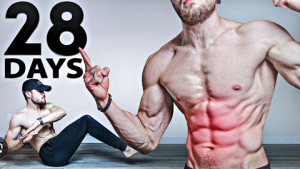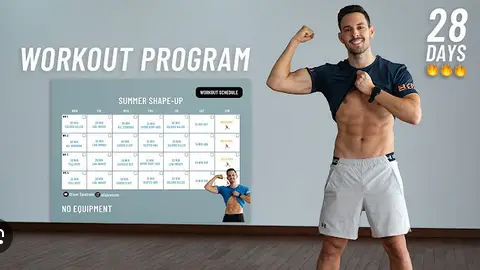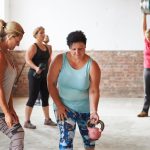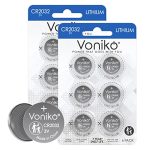Join the 28-Day Workout Challenge to optimize your fitness journey with tailored routines that adapt to your age and goals, ensuring safe and effective workouts for everyone.
Why Age-Specific Workouts Matter
As we grow older, the body undergoes natural physiological changes that affect how it responds to exercise. Metabolism slows, muscle mass declines, and joint flexibility may decrease. These changes necessitate a workout plan that aligns with your body’s current capabilities while pushing it toward improvement. An age-specific workout doesn’t just maximize efficiency; it also minimizes the risk of overtraining or injury. By acknowledging the body’s strengths and limitations at different life stages, the 28-day challenge becomes a highly personalized roadmap to fitness success.

The Benefits of a 28-Day Fitness Challenge
A 28-day fitness challenge serves as an ideal launchpad for transforming your body and establishing long-term habits. It’s long enough to produce visible results but short enough to maintain motivation. This timeframe allows for a structured progression in difficulty, ensuring that you can see improvement in strength, stamina, and overall fitness. Whether you’re aiming for weight loss, muscle gain, or enhanced cardiovascular endurance, the 28-day window provides the perfect framework for goal setting and achievement. Tailoring the challenge to your age amplifies these benefits, allowing for more targeted and sustainable progress.
Teens and Fitness: Building Strong Foundations
The teenage years are critical for building a strong foundation of fitness that will support health throughout life. With rapidly developing bodies, teens can leverage their natural energy and resilience to engage in a wide range of physical activities. The 28-day workout challenge for this age group should focus on agility, strength training, and endurance, using bodyweight exercises like push-ups, squats, and burpees. Cardio-based activities like running, swimming, or team sports help improve cardiovascular health.
However, it’s essential to avoid overexertion, as bones and muscles are still growing. Rest and recovery should be emphasized alongside consistent exercise to ensure teens build strength without putting undue strain on their developing bodies. Flexibility training, such as yoga or dynamic stretching, can also help improve mobility, reduce injury risk, and foster a balanced approach to fitness.
Fitness in Your 20s: Reaching Peak Performance
The 20s are often considered the prime years for fitness. During this period, the body is capable of reaching peak performance levels in terms of strength, stamina, and agility. The 28-day workout challenge for those in their 20s should capitalize on this by incorporating high-intensity exercises that build muscle, burn fat, and increase endurance.

Strength training should be a priority, with exercises like deadlifts, bench presses, and pull-ups forming the core of the routine. High-Intensity Interval Training (HIIT) can also be included to boost cardiovascular health and metabolism. In this decade, consistency is key, as is pushing the body to new limits. A balanced diet rich in protein and essential nutrients is vital for muscle repair and growth, ensuring that the hard work in the gym translates to visible results.
Fitness in Your 30s: Maintaining Strength and Stamina
As metabolism begins to slow in the 30s, the focus of the 28-day workout challenge shifts toward maintaining muscle mass and building metabolic efficiency. While the body may not respond as quickly to exercise as it did in the 20s, consistent strength training combined with cardiovascular work can yield impressive results.
Circuit training, which combines strength and cardio exercises, is particularly effective in this decade. It allows for a full-body workout that burns fat while promoting lean muscle development. Exercises like kettlebell swings, push-ups, and planks should be incorporated, alongside cardio activities such as running or cycling. Functional training, which mimics everyday movements, also helps maintain mobility and joint health. Core exercises are particularly important in this stage to prevent back pain and enhance overall stability.
Fitness in Your 40s: Prioritizing Flexibility and Mobility
By the time individuals reach their 40s, maintaining flexibility and mobility becomes increasingly important. Strength training remains a key component of the 28-day workout challenge, but the intensity should be moderated to avoid injury. Resistance training using lighter weights or resistance bands can help preserve muscle mass without placing undue stress on the joints.
Low-impact cardiovascular exercises, such as swimming, brisk walking, or using an elliptical machine, are excellent for heart health while being gentle on the body. This is also the decade to incorporate more flexibility and mobility work into the routine, as muscle stiffness and joint discomfort can begin to set in. Yoga and Pilates are fantastic options for maintaining flexibility, improving balance, and relieving stress, all of which contribute to overall wellness.
Fitness in Your 50s: Focusing on Joint Health and Strength
As the body enters its 50s, the emphasis should shift towards preserving strength and protecting joint health. The 28-day workout challenge for this age group should incorporate strength training at least two to three times a week to combat muscle loss. Exercises such as squats, lunges, and wall sits help maintain lower body strength, while resistance band exercises support upper body stability.
Cardiovascular health is equally important, but high-impact activities should be replaced with low-impact options like cycling, swimming, or walking. Balance and flexibility exercises, such as standing on one foot or doing heel-to-toe walks, are crucial for maintaining stability and preventing falls. Stretching and mobility work, especially for the hips and shoulders, help maintain a full range of motion and keep the body limber.
Fitness in Your 60s and Beyond Embracing Gentle Movement
For individuals in their 60s and beyond, fitness routines should be designed to support longevity, mobility, and quality of life. The 28-day workout challenge for this age group should focus on gentle movement that maintains strength, balance, and flexibility. Resistance training remains important for bone health, but it should be performed with lighter weights or resistance bands to prevent strain.
Aquatic exercises, such as water aerobics or swimming, are excellent options for maintaining cardiovascular health without putting stress on the joints. Walking is another simple but effective way to stay active. Balance exercises, such as Tai Chi or chair yoga, can improve stability and prevent falls, which become a greater concern as we age. Flexibility work should be a daily practice, keeping the muscles supple and joints fluid.
The Importance of Recovery in Age-Specific Workouts
Recovery is an integral part of the fitness process, especially as we age. Whether you’re in your 20s or 60s, allowing the body time to heal between workouts is essential to prevent injury and enhance performance. The 28-day challenge should include active recovery days, where light activity such as walking or stretching is encouraged, allowing the muscles to repair and grow stronger.
For older adults, recovery might take a little longer, and listening to your body becomes even more important. Ensuring that you get adequate sleep, stay hydrated, and eat nutrient-dense foods will support recovery and make each workout more effective.
Nutrition and Hydration: Fueling Your Fitness Journey
No workout challenge is complete without the proper nutrition and hydration to fuel it. Each age group requires a different approach to nutrition. Younger individuals, particularly teens and those in their 20s, benefit from high-protein diets that support muscle growth and recovery. As we age, incorporating more anti-inflammatory foods, like leafy greens, fatty fish, and nuts, becomes essential to protect joints and reduce muscle soreness.
Staying hydrated is critical at any age, but older adults need to be particularly mindful of fluid intake, as thirst signals can diminish over time. Drinking enough water helps to maintain energy levels, supports recovery, and enhances overall performance.





